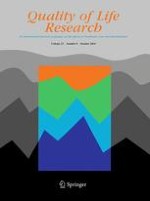01-10-2014
Mixture modelling analysis of one-month disability after stroke: stroke outcomes study (SOS1)
Gepubliceerd in: Quality of Life Research | Uitgave 8/2014
Log in om toegang te krijgenAbstract
Purpose
Understanding the heterogeneity in disability after stroke is important to guide treatment and rehabilitation planning. We explored mixture modelling analysis to identify subgroups of stroke disability and factors associated with disability subgroups.
Method
Analyses were performed using secondary data from a cohort of 448 stroke patients who participated in a 2-year study of stroke outcomes. Mixture modelling approach was used to determine subgroups of early disability following stroke based on the Barthel Index, General Health Questionnaire (GHQ-28), Frenchay Activities Index and the Nottingham Extended Activities of Daily Living Scale.
Results
Five distinct disability groups were identified. Nineteen (4.2 %) patients were classified as having very severe disability, 58 (12.9 %) severe disability, 133 (29.7 %) moderate disability, 198 (44.2 %) mild disability and 40 (8.9 %) a mood disorder. Compared to the mild group, patients in the “very severe” group were more likely to be elderly and to have had a previous stroke, and less likely to live alone and had a greater risk of mortality 2 years after stroke. Patients in the mood disorder group showed greater dependency in activities of daily living were younger compared to the other groups and had a greater risk of having mood symptoms 2 years after stroke.
Conclusion
Mixture modelling of 1-month disability after stroke using a broad range of outcome measures has identified clinically meaningful groups relating to long-term outcomes.
